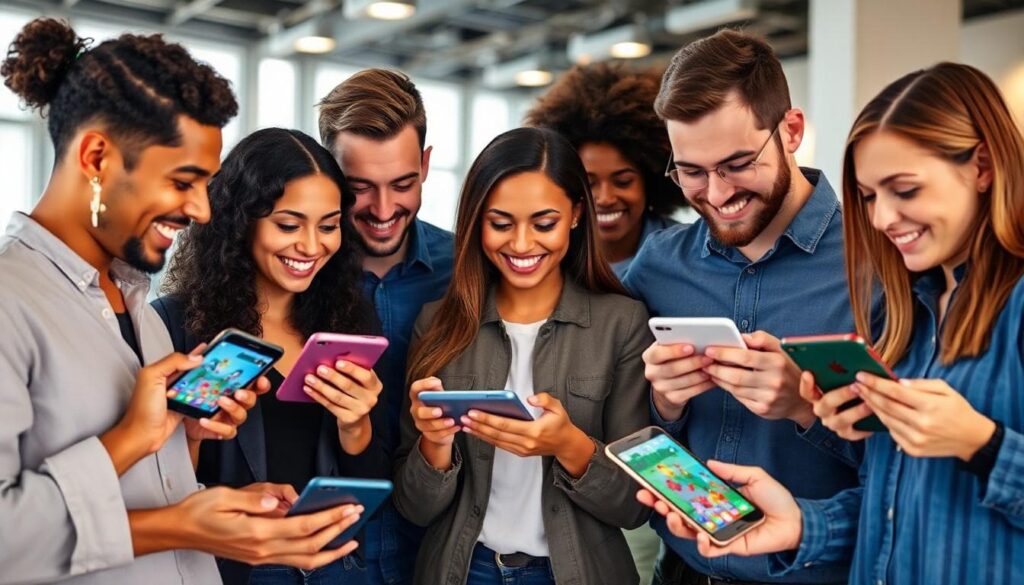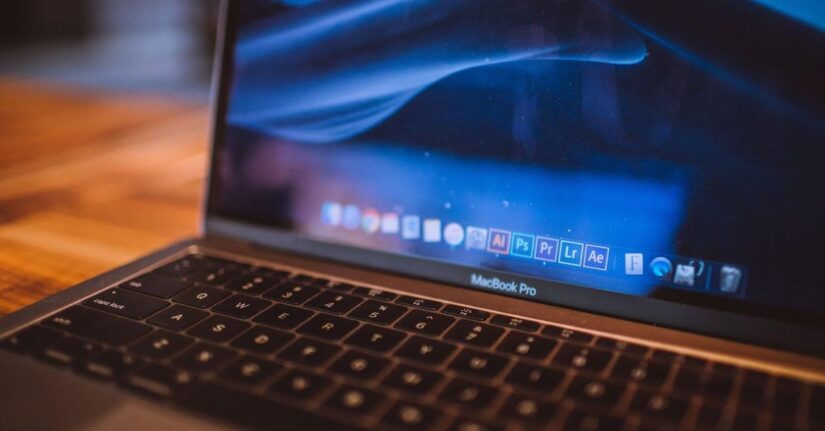Top Applications for the Apple Gamification: Boost Engagement and Motivation Today
Have you ever wondered why some apps feel so addictive, drawing you back again and again? It’s not just clever design—it’s gamification. Apple’s ecosystem has embraced this concept in ways that go beyond entertainment, turning everyday tasks into engaging challenges. From fitness trackers that reward your progress to productivity tools that feel like leveling up in a game, gamification is changing how you interact with technology.
You’re not just using apps anymore; you’re part of an experience that motivates, entertains, and even educates. Apple developers are blending game mechanics with functionality, creating applications that keep you hooked while helping you achieve your goals. Curious about how this trend is shaping the apps you rely on? Let’s jump into the world of Apple gamification and uncover the innovative ways it’s transforming your digital life.
What Is Apple Gamification?
Apple gamification uses game elements to increase user engagement within apps on Apple’s ecosystem. Developers incorporate features like points, badges, leaderboards, and challenges to make interactions more enjoyable and rewarding. These features turn routine activities, such as tracking fitness or managing tasks, into experiences that feel more like games.
You benefit from gamification because it motivates consistent app usage. For example, Apple Fitness+ offers achievement medals and streak tracking to keep you dedicated to exercise routines. Similarly, apps like Duolingo use gamified methods, including progress tracking and XP rewards, to make learning engaging.
Apple’s design guidelines emphasize user-friendly gamification, ensuring seamless integration into its ecosystem. Gamification supports accessibility and simplicity, making it widely effective across different app categories. Popular applications in health, education, productivity, and finance leverage this strategy to retain users and enhance app satisfaction.
Key Features Of Gamification In Apple Applications

Gamification in Apple applications uses interactive strategies to increase engagement, reward progress, and enhance user experiences in various app categories. These features increase motivation and drive consistent usage.
Rewards Systems
Rewards systems in Apple applications provide incentives for completing tasks or achieving milestones. Points, badges, and digital trophies are common rewards. For example, Apple Fitness+ awards badges for hitting workout goals, while Duolingo provides streak rewards for consistent learning. These systems encourage users to stay motivated and maintain streaks or behaviors.
User Engagement Strategies
Apple applications use leaderboards, challenges, and push notifications to enhance engagement. Leaderboards rank users based on performance, fostering competition. Challenges, like group activity competitions in Apple Fitness+, promote collaboration and goal-sharing among users. Notifications remind users of progress and upcoming goals, helping reinforce habits over time.
Progress Tracking
Progress tracking shows users their achievements and improvements. Apple applications often display visual progress indicators, such as activity rings on Apple Watch, to represent goals. Apps like Habitica use gamified tracking to let you view your task completion rates and earn rewards. These visual cues keep users aware of their progress, promoting consistent app usage.
Popular Applications For The Apple Gamification
Apple gamification enhances user interaction across various app categories. Developers integrate engaging elements to motivate participation and improve user experiences.
Health And Fitness Apps
Gamification transforms fitness apps into motivating tools. Apple Fitness+ uses badges, progress streaks, and challenges to maintain user interest. Apps like Strava and MyFitnessPal incorporate leaderboards and rewards, encouraging users to compete and track achievements. These features help you stay consistent with your health goals.
Educational Apps
Gamified features make learning apps more engaging. Duolingo motivates users by assigning experience points and streak rewards for daily practice. Khan Academy and Quizlet use progress tracking and achievement badges, helping users achieve educational milestones. These elements improve focus and encourage continuous learning.
Productivity Apps
Productivity apps leverage game mechanics to build habits. Apps like Things 3 and Habitica assign tasks, points, and daily streaks, promoting time management and goal completion. Microsoft To Do integrates reminders and progress markers, guiding users to achieve consistent productivity. Gamification simplifies complex task completion, keeping you organized.
Entertainment And Gaming Apps
Entertainment and gaming apps use gamification to enhance enjoyment. Apple Arcade offers leaderboards and achievements to keep users engaged. Trivia and puzzle apps, such as HQ Trivia and Candy Crush, reward performance with in-game bonuses. These apps combine entertainment with rewarding user interaction.
Benefits Of Gamification In Apple Applications
Gamification in Apple applications enhances user experiences by integrating game-like mechanics into functional tools. This technique boosts engagement and satisfaction across diverse app categories.
Enhanced User Motivation
Gamification increases your motivation by rewarding actions within applications. Features like points, streaks, and badges provide measurable goals. For instance, Apple Fitness+ awards achievement badges for meeting fitness milestones. These rewards encourage consistency and effort.
Challenges elevate your experience by creating goals that push you further. Leaderboards in apps like Strava enable healthy competition among users, inspiring them to improve their performance. The element of fun sustains interest in recurring tasks.
Improved Retention Rates
Retention improves when apps use gamification components to maintain your engagement over time. Progress trackers, for example, visually represent your achievements, creating a sense of accomplishment. Duolingo employs streak counters to encourage daily app usage, reducing dropoff.
Rewards systems like redeemable tokens or in-game achievements create emotional investment. Habitica integrates gamification into task management, converting productivity goals into engaging, reward-driven activities. This keeps you connected with the app’s core functionality.
Seamless Integration With Apple Ecosystem
Apple’s ecosystem supports gamification by linking apps through shared data and unified interfaces. Health and fitness apps sync effortlessly with Apple Health, offering a centralized view of your achievements. These integrations ensure consistency and convenience for users.
Developers use Apple’s capabilities, like Game Center for leaderboards or Cross-Device Compatibility, to optimize the gamification process. This unifies gaming and non-gaming experiences, enriching app usage. For example, Apple Arcade lets you access progress across multiple devices, ensuring continuity in engagement.
Challenges Of Implementing Gamification In Apple Applications
Adding gamification to Apple apps improves user engagement but involves challenges that can impact functionality and user satisfaction.
Balancing Complexity And Simplicity
Gamification requires a balance between features and usability. Overloading an app with gamified elements, such as excessive badges or challenges, can overwhelm users and dilute engagement. Simplified systems risk losing user interest if rewards or features feel insufficient. To create appealing apps, ensure game mechanics enhance core functionality instead of overshadowing it.
Maintaining Long-Term Engagement
Sustaining user interest over time involves evolving content and experiences. Gamified elements, like streaks or leaderboards, can lose their impact if users feel fatigued or if challenges become repetitive. Regular updates introducing new tasks, rewards, or achievements help maintain user excitement. Use data-driven insights from user behavior to adapt and refine gamification strategies based on evolving preferences.
Future Of Gamification In Apple Applications
Gamification in Apple applications is projected to expand its role in user engagement. Developers are expected to design apps that merge advanced game mechanics with artificial intelligence (AI). By incorporating AI, apps can personalize challenges and rewards based on user behavior, increasing relevance and motivation.
Wearable devices, like Apple Watch, will likely drive gamified experiences further. For example, activity tracking can integrate real-time challenges, promoting health goals while syncing seamlessly across devices within the Apple ecosystem.
Enhanced augmented reality (AR) features are also anticipated to reshape apps. By blending gamified elements with AR, such as virtual achievements visible through your camera or immersive game-like elements in education apps, user interaction can become more dynamic and engaging.
Cross-platform compatibility is set to improve engagement consistency. Progress tracking, leaderboards, and rewards could connect users across devices, including iPhone, iPad, and Mac, fostering a unified experience.
Advancements in analytics may refine gamification strategies. Developers can monitor user data to adjust difficulty levels, refine rewards, and ensure sustained interest over time.
Sustainability and social impact themes may also be gamified. For example, wellness apps could reward eco-friendly habits or collaborative achievements that address societal issues, enhancing user participation with meaningful incentives.
Conclusion
Apple gamification continues to transform how you interact with apps, making everyday tasks more engaging and rewarding. By seamlessly blending game mechanics with functionality, it enhances your experience while motivating consistent usage. From fitness goals to productivity milestones, gamified features keep you inspired and invested.
As technology evolves, the potential for gamification within Apple’s ecosystem will only grow. With innovations like AI, AR, and wearable integration, you’ll see even more personalized and immersive experiences. Whether you’re tracking progress, competing with others, or enjoying rewards, gamification ensures your app interactions remain dynamic and meaningful.


